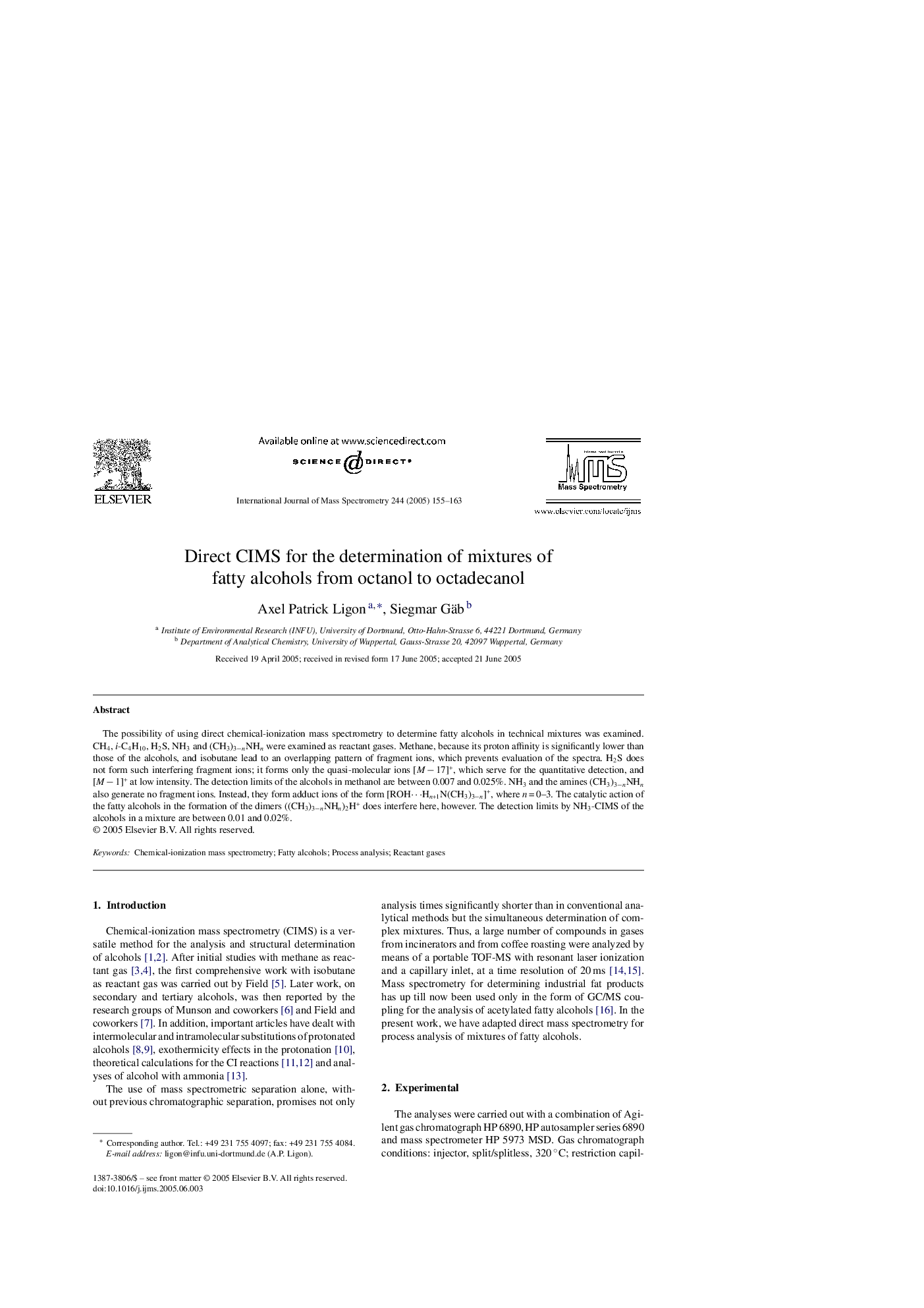| Article ID | Journal | Published Year | Pages | File Type |
|---|---|---|---|---|
| 9746647 | International Journal of Mass Spectrometry | 2005 | 9 Pages |
Abstract
The possibility of using direct chemical-ionization mass spectrometry to determine fatty alcohols in technical mixtures was examined. CH4, i-C4H10, H2S, NH3 and (CH3)3ânNHn were examined as reactant gases. Methane, because its proton affinity is significantly lower than those of the alcohols, and isobutane lead to an overlapping pattern of fragment ions, which prevents evaluation of the spectra. H2S does not form such interfering fragment ions; it forms only the quasi-molecular ions [M â 17]+, which serve for the quantitative detection, and [M â 1]+ at low intensity. The detection limits of the alcohols in methanol are between 0.007 and 0.025%. NH3 and the amines (CH3)3ânNHn also generate no fragment ions. Instead, they form adduct ions of the form [ROH···Hn+1N(CH3)3ân]+, where n = 0-3. The catalytic action of the fatty alcohols in the formation of the dimers ((CH3)3ânNHn)2H+ does interfere here, however. The detection limits by NH3-CIMS of the alcohols in a mixture are between 0.01 and 0.02%.
Keywords
Related Topics
Physical Sciences and Engineering
Chemistry
Analytical Chemistry
Authors
Axel Patrick Ligon, Siegmar Gäb,
